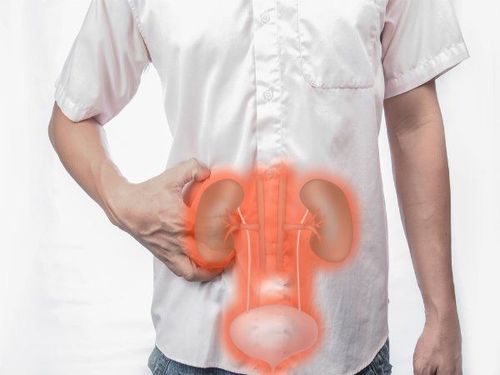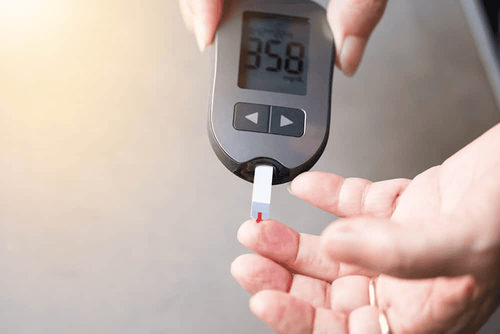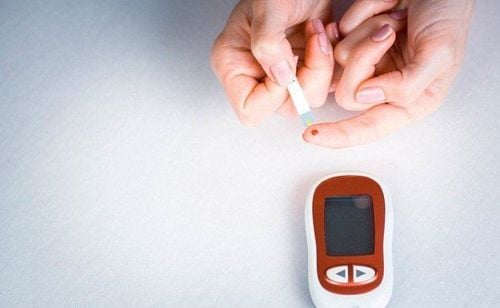This is an automatically translated article.
Pyme Diapro MR 30 mg is indicated for use in patients with type II diabetes mellitus who are not insulin dependent. To better understand the use of Pyme Diapro MR 30 mg, the composition of the drug, learn more in the article below.
1. What is pyme diapro mr 30mg?
The drug pyme diapro mr 30mg has the main ingredient gliclazide with a sufficient amount of excipients 1 tablet.
Pharmacodynamics of Pyme Diapro MR 30 mg:
Pyme diapro mr is a sulfonylurea antidiabetic drug. The main effect of this drug is to stimulate the beta cells of the pancreas to secrete insulin. Therefore, this drug only works for patients if the pancreas is still able to produce insulin. Sulfonylureas may further increase insulin levels by decreasing clearance of this hormone in the liver.
Mechanism of action Pyme Diapro MR 30 mg:
Gliclazide is an orally administered sulfonylurea antidiabetic drug that, unlike other related compounds, has nitrogen (N) heterocyclic bonds with a link and an inner ring.
Pyme diapro mr lowers blood glucose levels by stimulating insulin secretion from beta cells in the islets of Langerhans. Increased postprandial insulin secretion and C-peptide persisted after 2 years of treatment. In addition to these metabolic properties, gliclazide also has vascular effects.
Effect on insulin release: In patients with type 2 diabetes, gliclazide responds early to glucose to restore maximal insulin secretion and enhance phase 2 insulin secretion. Significant increase in response to insulin insulin has been observed following fasting or glucose induction.
Vascular properties: Pyme diapro mr reduces microthrombosis by two mechanisms. These two mechanisms may be involved in diabetes complications. Partially inhibits platelet aggregation and adhesion, and reduces platelet activation markers (beta thromboglobulin, thromboxane B2). Effects on fibrinolytic activity of vascular endothelium with increased tPA activity.
Pharmacokinetics of Pyme Diapro MR 30 mg:
After oral administration, plasma concentrations increase slowly up to 6 hours, reaching stable levels in 6-12 hours and pyme diapro mr is completely absorbed. Food has no effect on the rate or concentration of absorption. Most (about 95%) of the drug will be bound to plasma proteins. Pyme diapro mr is metabolized mainly in the liver, excreted mainly by the kidneys, less than 1% is recovered unchanged in the urine. Gliclazide T1/2 for 10-20 hours. The total distribution volume accounts for about 30l.
2. Uses of Pyme Diapro MR 30 mg
2.1. Indications of the drug Pyme Diapro MR 30 mg: Prescribe pyme diapro mr 30 mg for patients with type II diabetes who are not insulin dependent in combination with an appropriate diet, applied in the case of glucose control blood pressure is not achieved by diet alone.
2.2. Contraindications of Pyme Diapro MR 30 mg: Do not use pyme diapro in the following cases:
Patients with hypersensitivity to gliclazide or another sulfonylurea agent, sulfonamide. Type 1 diabetes, especially childhood diabetes, acidosis, severe ketosis, diabetic coma, or pre-cancer. Severe liver failure, severe kidney failure. The combination of with miconazole. Pregnant and lactating women. Serious infection or injury, major surgery.
3. How to use Pyme Diapro MR 30 mg effectively
3.1. How to use – dosage of the drug Pyme Diapro MR 30 mg The drug is used orally
Dosage:
The daily dose ranges from 1 to 4 tablets per day and should only be taken once in the morning.
The recommended starting dose is 1 tablet (30 mg)/day.
This dose may be used for maintenance therapy if blood glucose levels are appropriately controlled.
Slowly increase the dose if blood is better controlled, the dose of 2, 3, 4 tablets is equivalent to 60 mg - 90 mg or 120 mg. The changed dose should be maintained for 1 month before switching to a new dose, except in patients whose blood glucose has not decreased after 2 weeks of treatment.
The maximum amount of the drug within 1 day is 120 mg / day.
3.2. Precautions/Notes when using Pyme Diapro MR 30 mg It is necessary to choose the appropriate dose for each patient to avoid the risk of hypoglycemia. This drug should be used with caution in the elderly, in malnourished or physically depleted patients, in adrenal insufficiency, and pituitary dysfunction. Pregnancy: Gliclazide is contraindicated. Lactation: It is not known whether the drug passes into breast milk. However, nursing mothers should not take gliclazide because of the potential for hypoglycemia in the infant. Effects of the drug on the performance of machines and the ability to use: Be aware of symptoms of hypoglycemia and be careful when driving or operating machines. What to do if overdose?
In case of overdose this leads to hypoglycemia such as sweating, pale skin and palpitations. For mild cases, treat mild hypoglycemia by immediately drinking sugar water or juice mixed with 2 or 3 teaspoons of sugar. In severe cases, which may manifest as malaise, a 10% or 30% intravenous glucose solution should be infused immediately and the patient referred to the hospital. In an emergency, call 911 immediately or go to your local medical center.
What to do if you miss a dose?
Add dose as soon as you remember. However, in case it is almost time for the next dose, skip the missed dose and continue taking the medicine. Do not take a double dose to make up for a missed dose.
3.3. Side effects of Pyme Diapro MR 30 mg Gastrointestinal disturbances such as nausea, vomiting, belching, loss of appetite, diarrhea and metallic taste in the mouth can often occur with the use of mild, dependent sulfonylureas. into dosage. Increased appetite and weight gain may occur. Rash and itching may occur, and photosensitivity have also been reported. Rash is often a hypersensitivity reaction and can lead to more serious medical conditions. Facial flushing may occur in patients receiving sulfonylureas.
Mild hypoglycemia may occur, severe cases are rare and usually due to overdose.
Other serious effects may manifest themselves as hypersensitivity reactions. Abnormal liver enzymes, hepatitis, cholestatic jaundice, leukopenia, thrombocytopenia, aplastic anemia, agranulocytosis, hemolytic anemia, erythema multiforme or Stevens-Johnson syndrome, skin desquamation inflammation, including erythema.
3.4. Drug interactions Caution should be exercised when gliclazide is used in combination with drugs known to alter or enhance the status of diabetes. The hypoglycemic effect of gliclazide is when used in combination with phenylbutazone, salicylate, sulfonamide, coumarin derivatives, MAO inhibitors, adrenaline blockers, tetracycline, chloramphenicol, clofibrate, disopyramide, miconazole (oral) and cimetidine. This can happen. It can be reduced by the use of corticosteroids, oral contraceptives, thiazide diuretics, phenothiazine derivatives, thyroid hormones, and overuse of laxatives.
Please dial HOTLINE for more information or register for an appointment HERE. Download MyVinmec app to make appointments faster and to manage your bookings easily.













